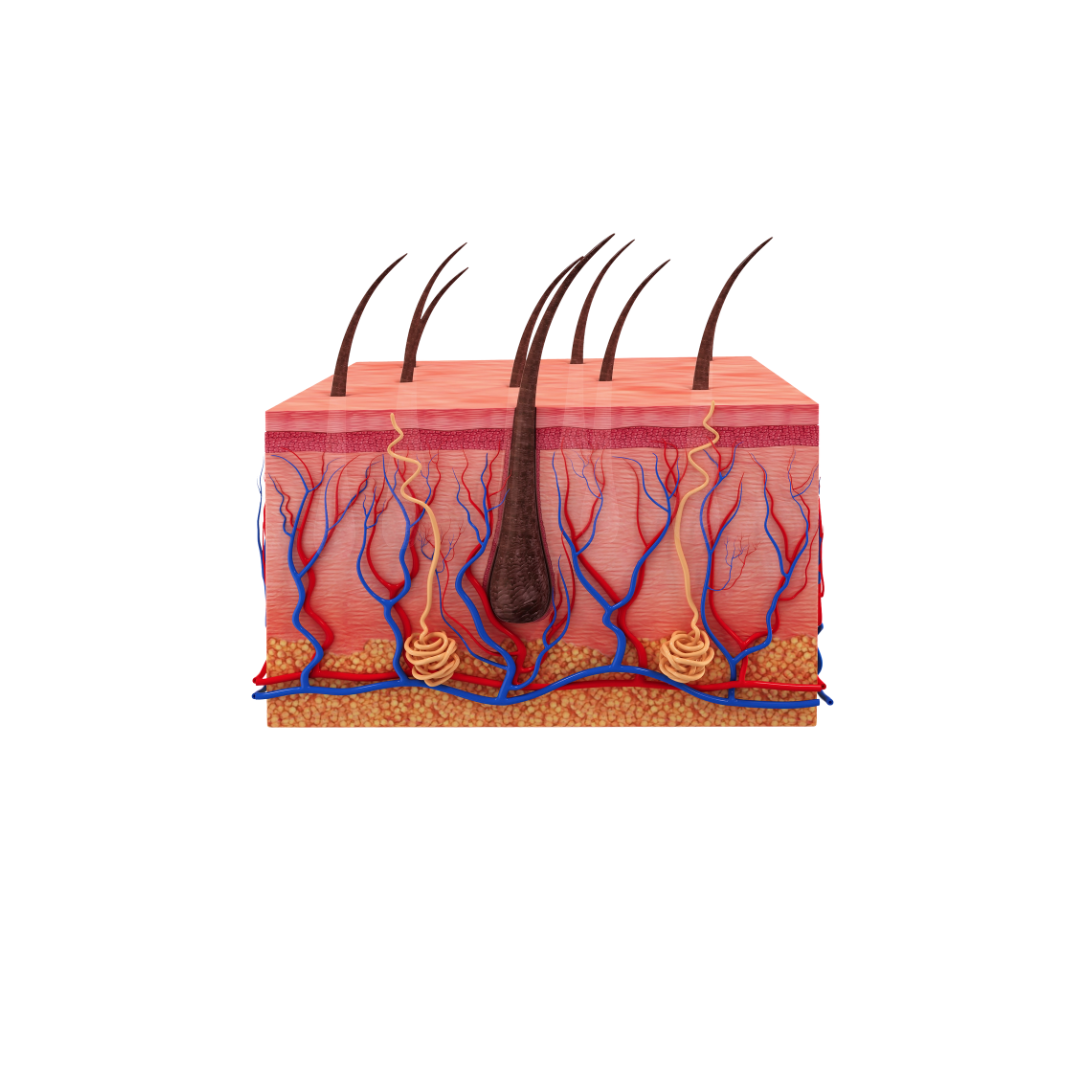

The Skin is the largest organ in the body. It acts as the first layer of protection against the environment. The skins function is to regulate body temperature, it gathers sensory information from the environment and plays an active role in the immune system protecting us from disease. Our skin makes up 15% of our body weight. Our skin is not only a physical barrier it forms part of our self-confidence. It reflects how healthy we are as well as the attention that a person gives to their appearance. When your skin is clear from blemishes and healthy you feel more youthful, attractive and confident.
The outer layer of skin, the epidermis, is a translucent layer made of cells that function to protect us from the environment. The most superficial portion contains dead skin cells that are continually shed and replenished, this is also known as the stratum corneum. The deepest portion contains basal cells that are responsible for skin renewal.
Keratin, a protein made within the cells of the epidermis, protects the skin from harmful substances, such as chemical products and bacteria. Keratin is the strongest protein in your skin and it also gives hair and nails their strength.
The epidermis also contains cells that produce melanin, which gives skin its colour. The epidermis is responsible for the look and health of the skin and it holds a large amount of water. The younger the body, the more water there is in the skin. The capacity of the skin to retain water decreases with age, making the skin more vulnerable to dehydration and wrinkles. By using microdermabrasion we are removing the dead skin cells from the stratum corneum allowing deeper penetration of our skin care products resulting in more hydrated skin.
Beneath the epidermis skin layer is the dermis which provides structure and support. The dermis contains two types of fibres that lessens in supply with age: elastin, which gives skin its elasticity, and collagen, which provides strength.
Collagen: Collagen is the most abundant protein in the skin. It makes up 75% of your skin. This is also your “fountain of youth.” Collagen is responsible for slowing down wrinkles and fine lines.
Elastin: This protein is found together with collagen and is responsible for giving structure to your skin and organs. As with collagen, elastin is affected by time and the elements.
Over time, environmental factors and the ageing process diminish your body’s ability to produce collagen and elastin. As this network of fibres breaks down, the skin loses its elasticity and becomes laxer and can contribute to the formation of facial wrinkles.
The subcutaneous tissue, or hypodermis, is mostly made up of fat. It lies between the dermis and muscles or bones and contains blood vessels that expand and contract to help keep your body at a constant temperature. The hypodermis also protects your vital inner organs. Reduction of tissue in this layer is what causes your skin to sag.



